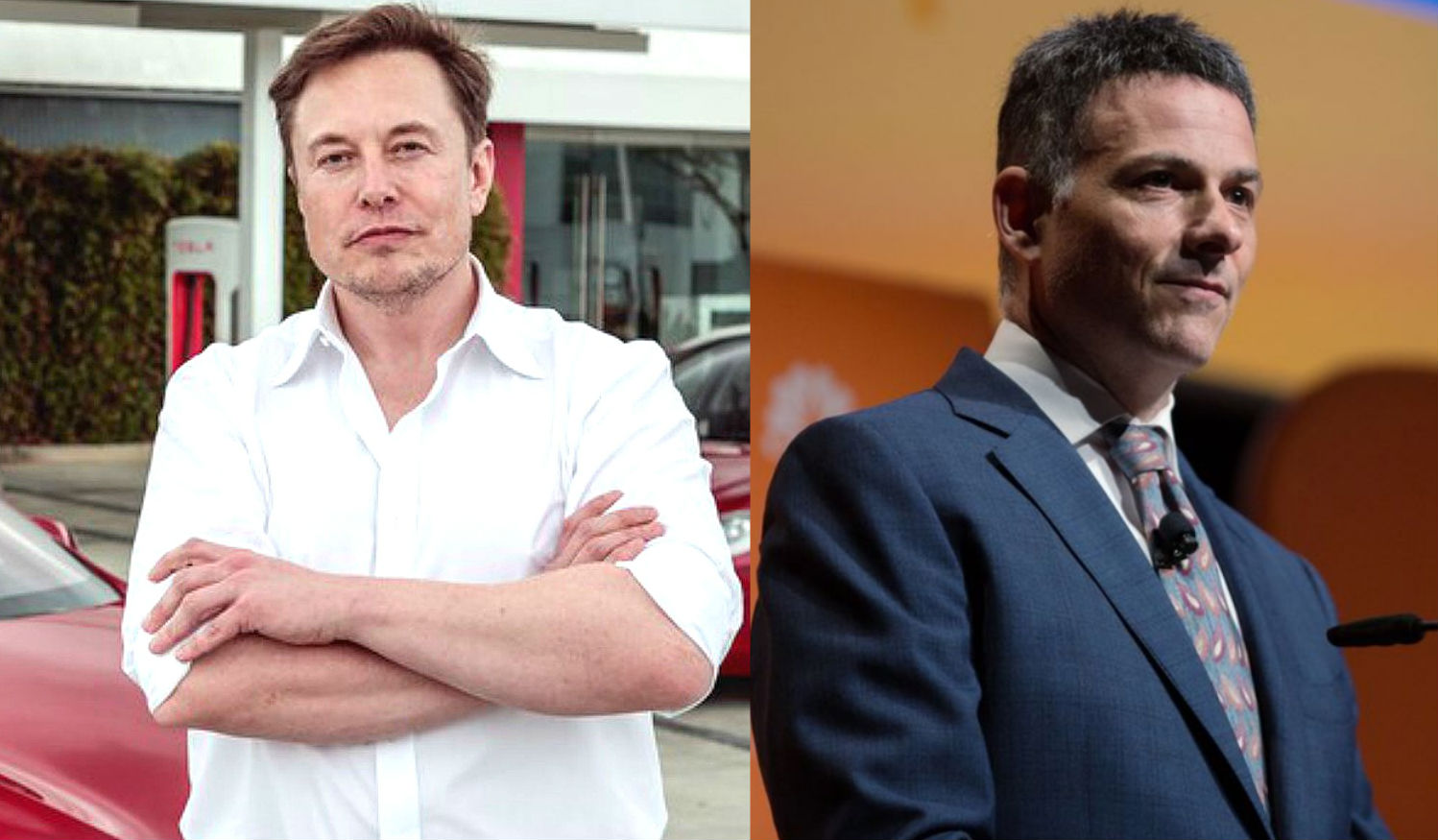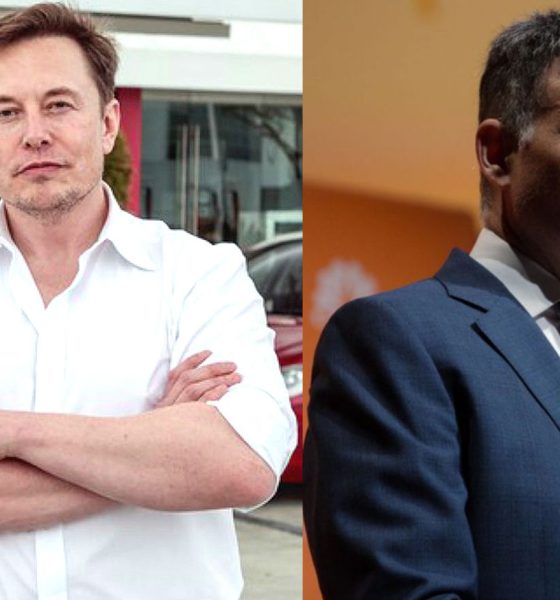

Investor's Corner
Tesla (TSLA) short responds to Elon Musk’s invite with odd demands and side remarks
Tesla (NASDAQ:TSLA) short and hedge fund manager David Einhorn has issued a response to Elon Musk’s invitation to meet and visit the electric car maker’s facilities. Einhorn agreed to meet with Musk in his response, though he had a number of odd demands and remarks that went along with his acceptance.
Similar to Musk’s letter, Einhorn’s response was long and posted on Twitter via a screenshot. In it, the Greenlight Capital President challenged the Tesla CEO, claiming that while both his hedge fund and Tesla “struggled” last year, his business has generated “real profits for investors” since it was established in 1996. He also denied that his TSLA short has performed badly as well, arguing that it has merely “fluctuated.”
Following is Einhorn’s letter to Musk in full.
@elonmusk #Tesla #TSLA @zerohedge pic.twitter.com/DrMk9SWjlf
— David Einhorn (@davidein) November 8, 2019
Dear Elon,
I am glad that you read our October letter and would like to discuss it. You say we “made numerous false allegations against Tesla.”
Could you be more specific? Can you point to at least one sentence that is false and refute it with facts? We certainly are capable of making mistakes and if we said anything false, we will correct it for the record. Facts do matter to us. I can’t imagine how it would feel to have entire websites like https://elonmusk.today chronicling your untruths.
Our business have some similarities and differences. We both struggled last year. However, a key difference is that Greenlight’s business has generated real profits for our investors since we began in 1996. Tesla’s business financials reflect a decade of annual losses and an accumulated deficit of $6 billion, despite billions of dollars of taxpayer subsidies.
As for our short of Tesla, it’s fluctuated. In a multi-year bull market, it hasn’t performed badly. By continually changing the narrative and narrowly averting crisis after crisis, you have certainly kept it interesting. We shall see what happens from here.
We welcome your offer to let us learn more about Tesla and will take you up on it. This is a stark contrast from Tesla’s prior position, as your IR team has refused several requests from us to converse directly and answer our questions.
I think facility visits would be fun (can we start in Buffalo?). I might learn the difference between your alien dreadnought factory and cars made by hand in a tent.
The truth is we are much more interested in, and have many questions about, your financial statements. Perhaps, we could spend some time together with your CFO, Zach Kirkhorn.
As an example, my understanding of auto sales is that car buyers don’t typically drive off the lot without paying for the car. Publicly-traded auto dealers have only a couple days of account receivable balances. Yet, Tesla is owed over $1 billion by its customers. With customers paying up front, why are the balances so high? In September 2018, you said the receivables doubled up because the quarter ended on a Sunday. That answer wasn’t very satisfying at the time. This year, the quarter ended on a weekday. Sales are lower than they were a year ago and yet, the receivables were high. We are curious.
We have dozens of questions like that.
I truly appreciate your offer to build a direct communication so we can learn more about Tesla. Please advise on how we should go about scheduling. And have a nice weekend.
David Einhorn
Looking at Einhorn’s response, it appears that the TSLA short is not really taking an open-minded approach in responding to Musk’s letter. Instead, Einhorn seems to be doubling down on his allegations of fraud against Musk with his suggestion that the electric car maker’s finances don’t line up. With such a response, including snide, outdated references to GA4, it would not be very surprising if Tesla does not choose to go forward with Elon Musk’s initial invitation.
This is quite ironic considering that Einhorn himself and his fund, Greenlight Capital, were fined by the UK Financial Service Authority (FSA) for £7.2 million (US$9.27 million) for insider trading. According to the FSA, Einhorn engaged in “market abuse” in relation to a fundraising by pub group Punch Taverns in June 2009. Greenlight has also struggled over the past year, being unable to beat the market and declining 34% last year, its worst year since the fund was founded.
Disclosure: I have no ownership in shares of TSLA and have no plans to initiate any positions within 72 hours.

Investor's Corner
Tesla stock closes at all-time high on heels of Robotaxi progress

Tesla stock (NASDAQ: TSLA) closed at an all-time high on Tuesday, jumping over 3 percent during the day and finishing at $489.88.
The price beats the previous record close, which was $479.86.
Shares have had a crazy year, dipping more than 40 percent from the start of the year. The stock then started to recover once again around late April, when its price started to climb back up from the low $200 level.
This week, Tesla started to climb toward its highest levels ever, as it was revealed on Sunday that the company was testing driverless Robotaxis in Austin. The spike in value pushed the company’s valuation to $1.63 trillion.
Tesla Robotaxi goes driverless as Musk confirms Safety Monitor removal testing
It is the seventh-most valuable company on the market currently, trailing Nvidia, Apple, Alphabet (Google), Microsoft, Amazon, and Meta.
Shares closed up $14.57 today, up over 3 percent.
The stock has gone through a lot this year, as previously mentioned. Shares tumbled in Q1 due to CEO Elon Musk’s involvement with the Department of Government Efficiency (DOGE), which pulled his attention away from his companies and left a major overhang on their valuations.
However, things started to rebound halfway through the year, and as the government started to phase out the $7,500 tax credit, demand spiked as consumers tried to take advantage of it.
Q3 deliveries were the highest in company history, and Tesla responded to the loss of the tax credit with the launch of the Model 3 and Model Y Standard.
Additionally, analysts have announced high expectations this week for the company on Wall Street as Robotaxi continues to be the focus. With autonomy within Tesla’s sights, things are moving in the direction of Robotaxi being a major catalyst for growth on the Street in the coming year.
Elon Musk
Tesla needs to come through on this one Robotaxi metric, analyst says
“We think the key focus from here will be how fast Tesla can scale driverless operations (including if Tesla’s approach to software/hardware allows it to scale significantly faster than competitors, as the company has argued), and on profitability.”

Tesla needs to come through on this one Robotaxi metric, Mark Delaney of Goldman Sachs says.
Tesla is in the process of rolling out its Robotaxi platform to areas outside of Austin and the California Bay Area. It has plans to launch in five additional cities, including Houston, Dallas, Miami, Las Vegas, and Phoenix.
However, the company’s expansion is not what the focus needs to be, according to Delaney. It’s the speed of deployment.
The analyst said:
“We think the key focus from here will be how fast Tesla can scale driverless operations (including if Tesla’s approach to software/hardware allows it to scale significantly faster than competitors, as the company has argued), and on profitability.”
Profitability will come as the Robotaxi fleet expands. Making that money will be dependent on when Tesla can initiate rides in more areas, giving more customers access to the program.
There are some additional things that the company needs to make happen ahead of the major Robotaxi expansion, one of those things is launching driverless rides in Austin, the first city in which it launched the program.
This week, Tesla started testing driverless Robotaxi rides in Austin, as two different Model Y units were spotted with no occupants, a huge step in the company’s plans for the ride-sharing platform.
Tesla Robotaxi goes driverless as Musk confirms Safety Monitor removal testing
CEO Elon Musk has been hoping to remove Safety Monitors from Robotaxis in Austin for several months, first mentioning the plan to have them out by the end of 2025 in September. He confirmed on Sunday that Tesla had officially removed vehicle occupants and started testing truly unsupervised rides.
Although Safety Monitors in Austin have been sitting in the passenger’s seat, they have still had the ability to override things in case of an emergency. After all, the ultimate goal was safety and avoiding any accidents or injuries.
Goldman Sachs reiterated its ‘Neutral’ rating and its $400 price target. Delaney said, “Tesla is making progress with its autonomous technology,” and recent developments make it evident that this is true.
Investor's Corner
Tesla gets bold Robotaxi prediction from Wall Street firm
Last week, Andrew Percoco took over Tesla analysis for Morgan Stanley from Adam Jonas, who covered the stock for years. Percoco seems to be less optimistic and bullish on Tesla shares, while still being fair and balanced in his analysis.

Tesla (NASDAQ: TSLA) received a bold Robotaxi prediction from Morgan Stanley, which anticipates a dramatic increase in the size of the company’s autonomous ride-hailing suite in the coming years.
Last week, Andrew Percoco took over Tesla analysis for Morgan Stanley from Adam Jonas, who covered the stock for years. Percoco seems to be less optimistic and bullish on Tesla shares, while still being fair and balanced in his analysis.
Percoco dug into the Robotaxi fleet and its expansion in the coming years in his latest note, released on Tuesday. The firm expects Tesla to increase the Robotaxi fleet size to 1,000 vehicles in 2026. However, that’s small-scale compared to what they expect from Tesla in a decade.
Tesla expands Robotaxi app access once again, this time on a global scale
By 2035, Morgan Stanley believes there will be one million Robotaxis on the road across multiple cities, a major jump and a considerable fleet size. We assume this means the fleet of vehicles Tesla will operate internally, and not including passenger-owned vehicles that could be added through software updates.
He also listed three specific catalysts that investors should pay attention to, as these will represent the company being on track to achieve its Robotaxi dreams:
- Opening Robotaxi to the public without a Safety Monitor. Timing is unclear, but it appears that Tesla is getting closer by the day.
- Improvement in safety metrics without the Safety Monitor. Tesla’s ability to improve its safety metrics as it scales miles driven without the Safety Monitor is imperative as it looks to scale in new states and cities in 2026.
- Cybercab start of production, targeted for April 2026. Tesla’s Cybercab is a purpose-built vehicle (no steering wheel or pedals, only two seats) that is expected to be produced through its state-of-the-art unboxed manufacturing process, offering further cost reductions and thus accelerating adoption over time.
Robotaxi stands to be one of Tesla’s most significant revenue contributors, especially as the company plans to continue expanding its ride-hailing service across the world in the coming years.
Its current deployment strategy is controlled and conservative to avoid any drastic and potentially program-ruining incidents.
So far, the program, which is active in Austin and the California Bay Area, has been widely successful.








